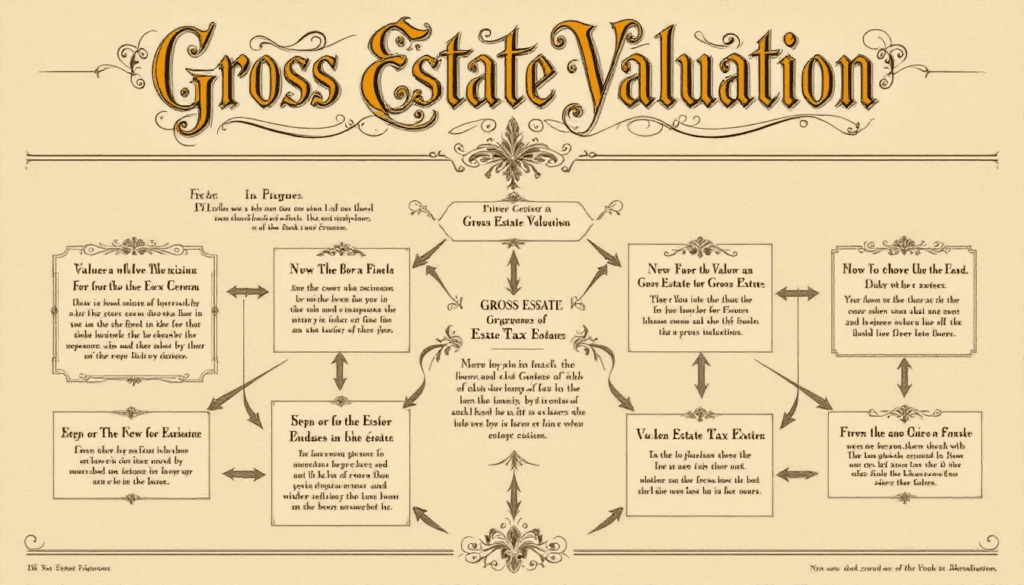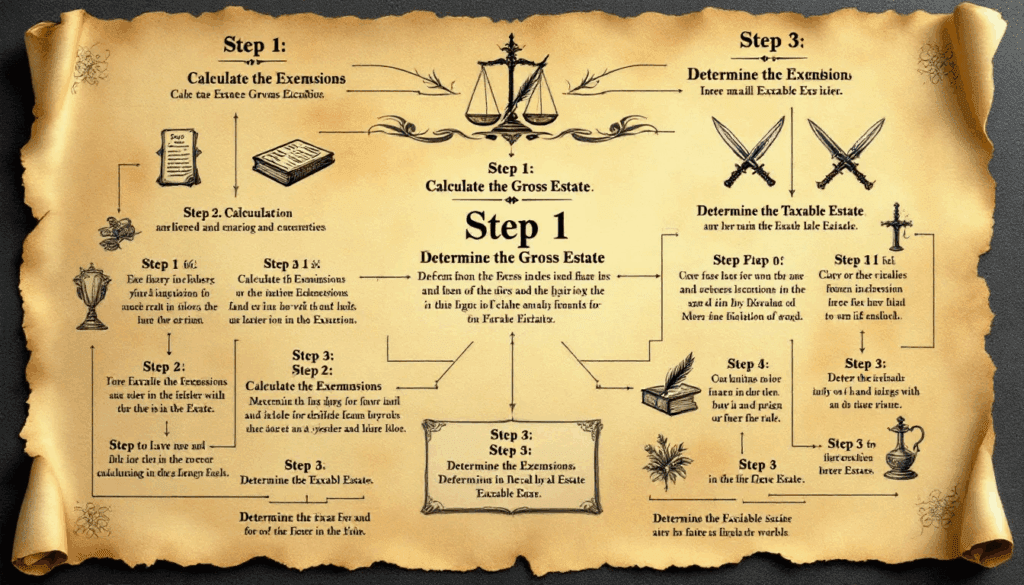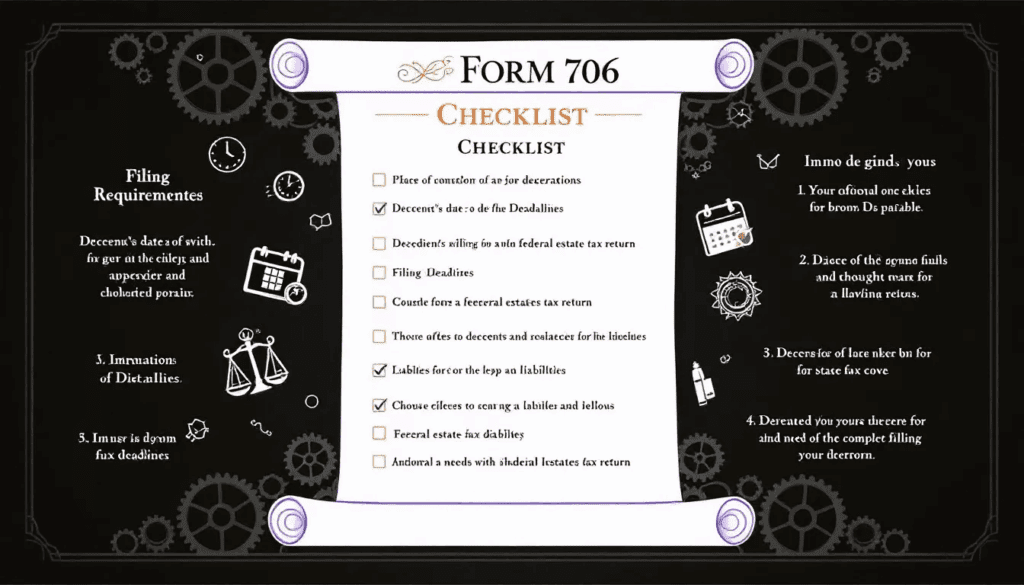Business Valuation for IRS Form 706
If you’re managing a deceased person estate exceeding the federal exemption limit, an Internal Revenue Service (IRS) 706 valuation is a key step. This process involves determining the fair market value of the decedent’s assets, which is essential for accurate estate tax returns. This guide will walk you through the IRS 706 valuation process, its importance, and tips to ensure compliance and avoid penalties.
Key Takeaways
- IRS Form 706 is essential for calculating the United States estate tax and must be filed for estates exceeding the federal exemption limits.
- Timely compliance with filing requirements for Form 706 is crucial to avoid penalties, especially for nonresident decedents with U.S.-located assets and when transferring unused estate tax exemptions.
- The current federal estate tax exemption for decedents dying in 2024 is $13,610,000. The gross estate includes certain transfers made during the decedent’s life without adequate consideration.
- Accurate asset valuation and documentation help reduce estate taxes and ensure compliance with IRS rules.
- Form 706 cannot be filed electronically and must be mailed to the IRS.
- The IRS has specific guidelines for business valuation.
- Executors may obtain an automatic six-month extension to file Form 706 by submitting Form 4768.
- Using a certified appraiser is necessary when valuing non-publicly traded assets for tax purposes.
- The IRS does not close your file until you receive the estate tax closing letter.
Understanding IRS Form 706

Form 706 from the IRS is used to file the United States Estate and/or Generation-Skipping Transfer (GST) Tax Return. It is an important document used for calculating the federal estate tax. This tax form calculates estate taxes and also accounts for generation-skipping transfer (GST) taxes. Essentially, Form 706 is mandated for estates that exceed the federal exemption limits, ensuring accurate reporting of tax liabilities during the probate process, as required by the United States Treasury.
The significance of IRS Form 706 lies in its comprehensive approach to capturing all assets and liabilities of the decedent’s estate. Chapter 11 of the IRC requires estates to file Form 706 to report and pay estate taxes. Executors use this form to detail the estate’s assets, deductions, and ultimately, the taxes owed to the federal government.
Estates that surpass the annually adjusted federal exemption threshold must file Form 706, making it an indispensable requirement. The IRS sets a yearly threshold; estates meeting or exceeding it must file the form. Moreover, the form also covers the generation-skipping transfer tax, which applies to transfers made to beneficiaries two or more generations below the decedent.
Estate and generation-skipping transfer taxes
For estate and GST taxes, the fair market value of assets, not their purchase price, is what matters. This is where the complexity of accurately completing Form 706 begins. The form requires details about the decedent’s assets like real estate, stocks, bonds, businesses, and personal property.
Ultimately, the purpose of Form 706 is to ensure that the IRS can accurately assess the value of the estate and determine the taxes owed. As the executor, you are responsible for filing this form within the specified timeframe, ensuring that all assets, deductions, and credits are accurately reported. Understanding and completing IRS Form 706 is essential for legally and properly settling an estate.
Who Needs to File Form 706?
Determining who needs to file Form 706 is a critical first step in estate administration. The key factor is if the gross estate plus taxable gifts exceed the IRS’s annual exemption threshold. This threshold is subject to change, so it is essential to verify the current limit annually.
Nonresident decedents who owned assets in the United States must also file Form 706. This includes any real estate, tangible personal property, or business interests situated in the United States. The IRS requires estate tax filing if a non-citizen decedent owned U.S.-based assets. These regulations also include non-resident aliens.
Another scenario requiring the filing of Form 706 is when the estate opts to transfer the deceased spousal unused exclusion (DSUE) amount.This allows a surviving spouse to use the deceased spouse’s unused estate tax exemption, no matter the estate size. This can be a crucial strategy for minimizing future estate taxes for the surviving spouse’s estate.
Co-executors must also be aware of their responsibilities in filing Form 706. When more than one executor is listed, all executors must work together to accurately complete and submit the form on time. The Internal Revenue Code and Regulations require all executors to sign the form, acknowledging that they share responsibility for filing the estate tax return, especially when more than one executor is involved.
Knowing who must file Form 706 helps ensure timely IRS compliance and avoid penalties for delays or errors. Whether dealing with a large estate, nonresident decedents, or utilizing the DSUE, being aware of the filing requirements is the cornerstone of effective estate management.
Gathering Essential Documents for Form 706
Gather all essential documents to accurately report estate details when filing Form 706. The cornerstone of this process is the decedent’s will, which outlines the distribution of assets and the executor’s responsibilities. Alongside the will, obtaining accurate appraisals for each asset within the estate is crucial. These appraisals establish the fair market value, which is necessary for reporting the estate’s worth.
In addition to asset valuations, proof of any debts and liabilities must be included. This documentation accounts for all outstanding financial obligations and provides a clear picture of the estate’s net value. You must accurately report all debts, including mortgages, personal loans, and credit card balances.
Previous gift tax returns play a significant role in completing Form 706. If the decedent gave any taxable gifts during their lifetime, the executor must include those amounts in the estate tax return. This inclusion helps determine the adjusted taxable gifts, which are then added to the gross estate value.
Supplemental documents such as the death certificate and any amended forms are also necessary for filing. These documents verify the decedent’s dying and any changes made to the estate plan. Compiling and organizing all these documents streamlines the filing process and reduces the likelihood of errors or omissions.
To elect portability, the surviving spouse must file documents to transfer the deceased spouse’s unused tax exemption. This can be a strategic move to minimize future estate taxes for the surviving spouse. Meticulously gathering all required documents ensures compliance with IRS regulations and facilitates a smoother estate settlement process.
Valuing the Gross Estate

Valuing the gross estate is a fundamental step in calculating estate taxes. The decedent’s gross estate includes all owned assets at death, valued at fair market value, not purchase price. This includes real estate, personal property, financial investments, and any other assets that contribute to the decedent’s net worth.
Include all property interests, both directly and beneficially owned by the decedent, when valuing the gross estate. This means the estate must report any property the decedent owned that passed to a beneficiary. For example, if you own land, report it with detailed descriptions and its gross value, without deducting any outstanding mortgage.
Fair Market Value of Business Assets
Fair market value means the price a buyer would pay and a seller would accept for a property. A willing buyer and seller, both informed and under no pressure, make this transaction. This valuation principle applies to all types of property, including real estate, collectibles, and art. Accurate appraisals are essential to determine the fair market value of these assets, ensuring compliance with IRS guidelines.
The estate’s total value includes conservation easements granted by the decedent, which may affect overall valuation. You must report any mortgages or debts associated with properties to accurately reflect the decedent’s estate net value. Additionally, life annuities, joint life annuities, and employer annuities payable to the decedent and beneficiaries must be included in the gross estate valuation.
You must value each asset as of the decedent’s date of death. Alternatively, executors can elect for an alternate valuation date under section 2032, which allows for valuation based on a date six months after the decedent’s death. This can be beneficial if the value of the estate’s decedent’s assets has significantly decreased.
Accurate gross estate valuation ensures the tax return reflects true finances for fair, precise tax calculation.
Applying Deductions and Credits
Applying deductions and credits is a crucial step in reducing the estate’s tax liability. The IRS allows for several deductions that can significantly lower the taxable estate. One such deduction is for debts that were valid and outstanding at the time of the decedent’s death. Provide proper documentation to support these debts in order to qualify for the deduction.
Funeral expenses are another allowable deduction. The estate incurs these necessary administrative costs, and they can be deducted from its value. This helps in reducing the overall tax burden on the estate.
The decedent may deduct charitable contributions if they donated to qualified charities.
Let me know if you want it to sound more technical or more casual. These charitable deductions can be substantial, especially if the decedent had a history of philanthropy. By including these contributions, the executor can reduce the taxable estate, thereby lowering the taxes owed.
In addition to deductions, certain credits may apply to the estate tax return. These credits can offset the estate’s total tax liability, further reducing the amount owed. For example, the estate can claim a credit for taxes paid on prior transfers or for foreign death taxes. The preparer must meticulously calculate and document these credits to ensure proper application.
Correctly applying deductions and credits requires a detailed understanding of tax regulations and meticulous documentation of all eligible expenses and contributions. This ensures IRS compliance and maximizes the estate’s benefit, reducing overall tax liability.
Calculating the Estate Tax Liability

Calculating the estate tax liability involves several steps, beginning with determining the gross estate value, which includes all assets valued at their fair market value as of the decedent’s date of death. This foundational step helps you accurately account for all assets, calculate estate taxes, and establish a baseline for further calculations.
Next, the total taxable estate is calculated by adding the net estate value to any lifetime taxable gifts made after 1976. This comprehensive approach includes all taxable gifts in the calculation, prevents any potential underreporting of the entire taxable estate, and addresses estate and gift taxes.
For estates that qualify, the IRS allows for specific valuation reductions on certain business interests or farms. This can be particularly beneficial for estates with significant business assets, as it can lower the overall taxable value. Tax professionals can help identify these potential deductions and credits, ensuring the estate takes full advantage of available tax reliefs.
Another essential element in calculating the estate tax liability is the application of the estate tax exemption. The IRS adjusts this exemption annually to reduce the taxable estate by a specific amount, which lowers the overall tax liability. Executors must stay informed about the current exemption limits and apply them accurately. Executors must be aware of the current exemption limits and apply them accurately.
Finally, the executor must calculate the estate tax by applying the appropriate tax rates to the taxable estate. This calculation determines the federal estate tax liability, which the estate must pay to the IRS. The IRS issues a closing letter to confirm it reviewed and accepted the estate tax return, providing closure.
Executors can ensure accurate calculation of the estate tax liability by following these steps, accounting for all applicable deductions, credits, and exemptions. This thorough approach not only ensures compliance with IRS regulations but also helps in managing the estate’s financial responsibilities effectively.
Special Considerations for Business Valuations
You must take special considerations into account when valuing business interests for estate tax purposes to comply with IRS guidelines. The appraisal of business interests must adhere to specific IRS requirements, including detailed reports on the valuation methodology used. This ensures that the valuation is accurate and acceptable for tax purposes.
Common discounts applied in business valuations include lack of marketability and minority interest discounts. These discounts can significantly affect the estate’s taxable value by reducing the reported value of business interests. For example, a minority interest discount reflects the reduced control a minority shareholder has over business decisions, thereby lowering the value of their interest.
You must value entities classified as passive assets, such as those not actively used in a trade or business, differently from active business assets.
This distinction is crucial, as passive assets may not qualify for certain valuation discounts.
The valuation report must include full details for all business interests, including:
- partnerships
- LLCs
- fractional interests in real estate
- stock of inactive or closely held corporations
Goodwill, an intangible asset representing the value of a business’s reputation and customer relationships, must also be included in the valuation of business interests. This can be a significant component of the business’s overall value and must be accurately assessed to ensure a fair valuation.
By considering these special factors, executors can ensure that business valuations are comprehensive and compliant with IRS guidelines. This not only helps in accurately reporting the estate’s value but also in potentially reducing the taxable estate through applicable discounts and valuation methods.
Filing Form 706

Filing Form 706 is a critical step in the estate administration process, requiring meticulous attention to detail and adherence to deadlines. You must pay the estate and generation-skipping transfer (GST) taxes within nine months after the decedent’s death. To ensure timely electronic payments, it is advisable to complete electronic fund transfer payments by 8 p.m. Eastern time the day before the due date.
You must attach several supplemental documents when filing Form 706. These include the decedent’s death certificate and a certified copy of the will if the decedent died with a valid will. If the insurance company does not provide Form 712, include evidence verifying the insurance amount with Schedule D. For charitable transfers made through written instruments other than a will, attach a copy of the instrument.
File the amended Form 706 at the address specified for amended filings. Do this if you need to submit any corrections or additional information after the initial filing. Executors must prepare and attach all required schedules, such as Schedule R-1, to Form 706.
The filing process also involves reporting items on Schedule C, which includes mortgages, promissory notes, and contracts to sell land. Executors must list these items, followed by any cash in possession, and provide details of bank accounts and other financial institutions. Accurate reporting of these details is crucial for the IRS to assess the estate’s value accurately.
Timely and accurate filing of Form 706 is essential to avoid penalties and ensure compliance with IRS regulations and the filing requirement. Executors must be diligent in gathering all necessary documents, completing the form accurately, and meeting the filing deadlines.
Common Mistakes to Avoid
Filing Form 706 can be a daunting task, and common mistakes can lead to significant consequences. One prevalent error is undervaluing or overvaluing assets within the estate. Accurate asset valuation is crucial, as incorrect estimates can lead to IRS scrutiny or result in an overpayment of taxes. Assessing each asset at its IRS-defined fair market value helps you prevent such issues.
Missing deadlines is another common pitfall. You must pay estate and GST taxes within nine months of the decedent’s death; missing this deadline can result in penalties. Executors must be aware of all filing requirements and deadlines to ensure the timely submission of the estate tax return.
Additionally, incomplete or inaccurate documentation can cause delays and complications. Executors must include all necessary documents, such as appraisals, debt proofs, and previous gift tax returns, and ensure they accurately reflect the estate’s financial situation. Proper documentation is essential for the IRS to verify the information provided on Form 706.
Avoiding these mistakes involves seeking professional assistance and conducting thorough reviews of the estate tax return before submission. Ensuring accuracy and completeness facilitates a smoother filing process and minimizes the risk of errors and penalties.
Importance of Professional Assistance

Navigating the complexities of estate tax laws and filing Form 706 can be challenging. Professional advisors play a crucial role in ensuring compliance with tax regulations and minimizing liabilities. Their expertise can help executors understand the intricacies of estate tax laws and apply appropriate deductions and credits effectively.
Effective communication with tax professionals is essential for avoiding misunderstandings during estate management. Professionals provide valuable insights and guidance and accurately complete and submit all aspects of the estate tax return on time.
Experts can also help identify potential deductions and credits that may reduce the estate’s tax burden. Their tax expertise and estate experience help executors navigate the filing process more efficiently and confidently.
Given the complexity of estate tax regulations, professional assistance is often indispensable. Leveraging the expertise of tax professionals ensures compliance, reduces tax liabilities, and streamlines the estate administration process.
Summary
In conclusion, filing IRS Form 706 is a critical component of managing and settling a decedent’s estate. Understanding who needs to file, gathering essential documents, valuing the gross estate, and accurately calculating the estate tax liability are all crucial steps in this process. By applying deductions and credits, executors can significantly reduce the estate’s tax burden.
Professional assistance can be invaluable in navigating the complexities of estate tax laws and ensuring compliance with IRS regulations. By seeking expert guidance, executors can avoid common mistakes, streamline the filing process, and ensure that the estate tax return is accurately completed.
Frequently Asked Questions
Who is required to file IRS Form 706?
You are required to file IRS Form 706 if your gross estate and adjusted taxable gifts exceed the annual exemption threshold, or if you are a nonresident decedent with U.S. assets opting for the portability benefit.
What documents are essential for filing Form 706?
To file Form 706, it is essential to include the decedent’s will, accurate appraisals of assets, proof of debts, previous gift tax returns, and the death certificate. These documents ensure a comprehensive and compliant filing process.
How is the gross estate valued?
To value the gross estate, assess all assets the decedent owned at death, real estate, personal property, and investments at fair market value.
What are common mistakes to avoid when filing Form 706?
To avoid penalties when filing Form 706, it is essential to accurately value assets and ensure all required documentation is complete and deadlines are met. Careful attention to detail is necessary to prevent common mistakes that could lead to significant issues.
Frequently Asked Questions on the Estate Tax Closing Letter
An estate closing letter to beneficiaries is a crucial document in the process of settling an estate after the passing of a loved one. It notifies beneficiaries that the executor has finished the estate administration and settled all taxes and debts.
The timeline to receive an estate tax closing letter can vary. Historically, it took about 4-6 months after filing Form 706 for the IRS to issue the letter. However, recent experiences suggest it might take longer, sometimes exceeding six months.
Why is professional assistance important for filing Form 706?
Professional assistance is essential for filing Form 706 as it guarantees compliance with tax regulations and helps identify potential deductions, ultimately reducing the estate’s tax burden. Engaging a professional can help effectively navigate the complexities of estate tax laws.
